This is what cheating looks like:
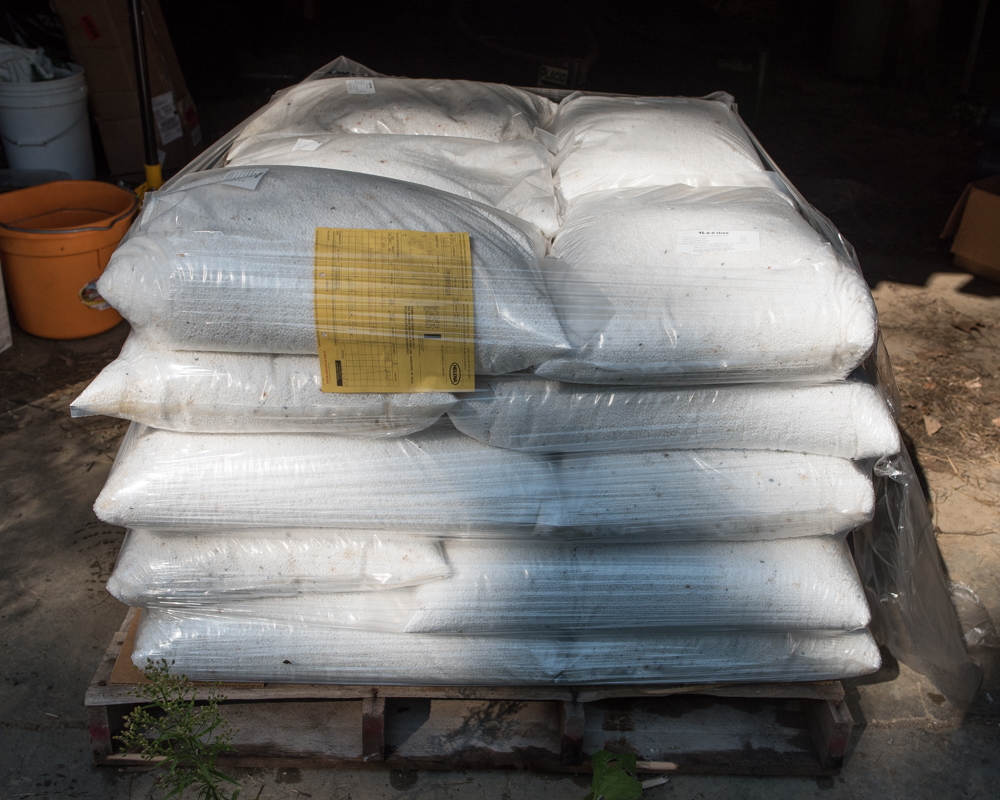
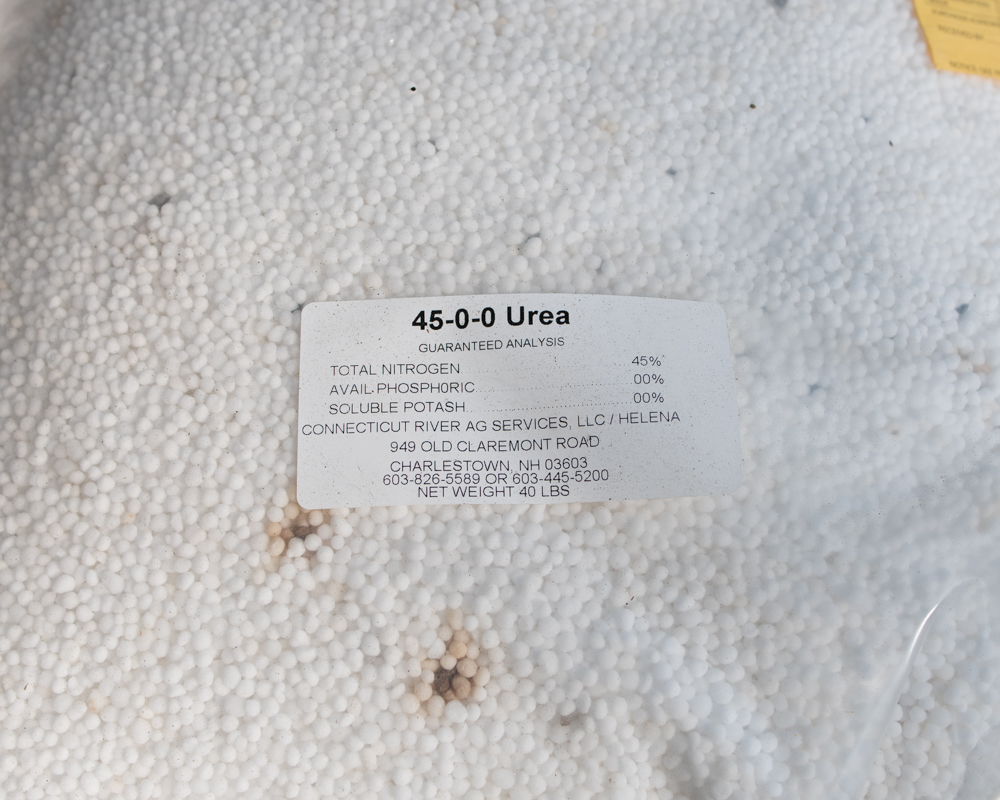
When I arrived on the farm last fall, the pastures were pretty exhausted, from a combination of overuse and less-than-sympathetic management. Bill Fosher made a compelling argument that if was thoughtful in the way I managed my flock of sheep, that alone would do wonders to bring back the productivity of these fields. Bill showed me examples of the effects of good and bad management, convincing me that carefully managed grazing can be almost miraculous. The trouble is that the One True Path takes time to bear fruit, and my sheep are hungry now.
So when I met with Carl Majewski, the UNH Extension agronomist, his suggestion that I might jumpstart the pasture improvement by spreading some urea fertilizer held illicit appeal. Urea is a concentrated form of nitrogen that’s easily absorbed by plants. Its action is not unlike that of anabolic steroids on baseball players: unprecedented growth coupled with moral ambiguity. I’ll leave discussions of muscle-bound home-run hitters to my readers; urea is synthesized using large amounts of natural gas, both as feedstock and to provide the energy to run the process, so its use turns a solar-powered process (growing grass and sheep) into one dependent on fossil fuels. Leaning on shaky logic — a little hit won’t get me hooked — I decided to give it a try.
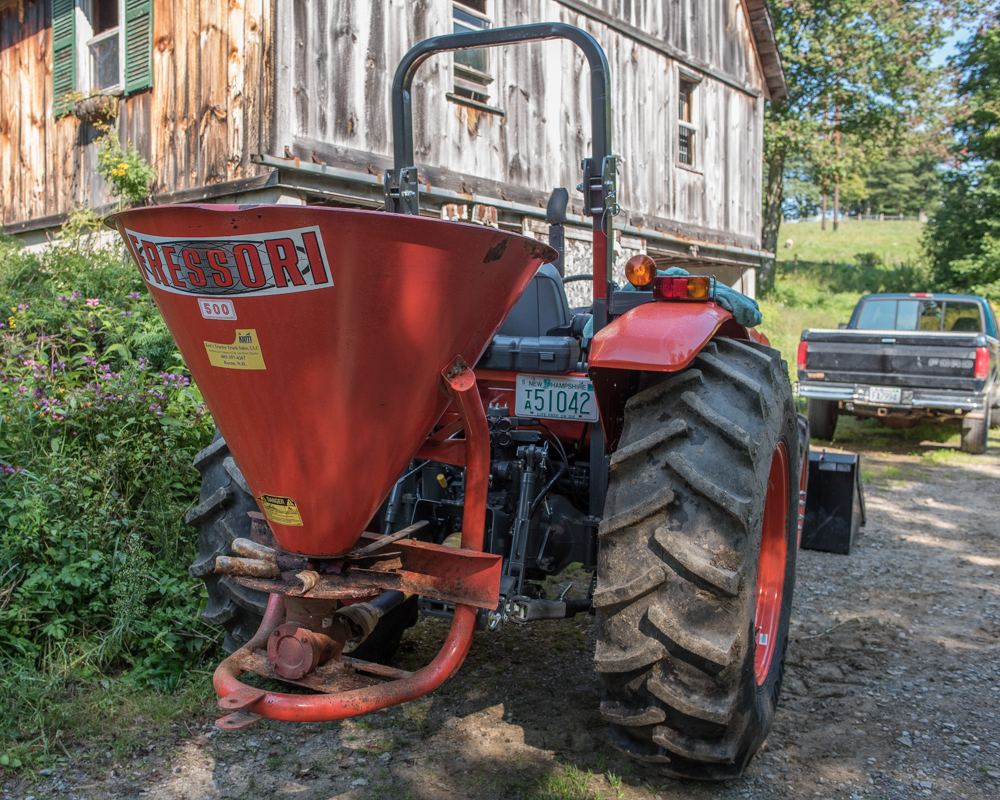
My friend Bob Jones lent me his cone spreader, the delivery device of choice.
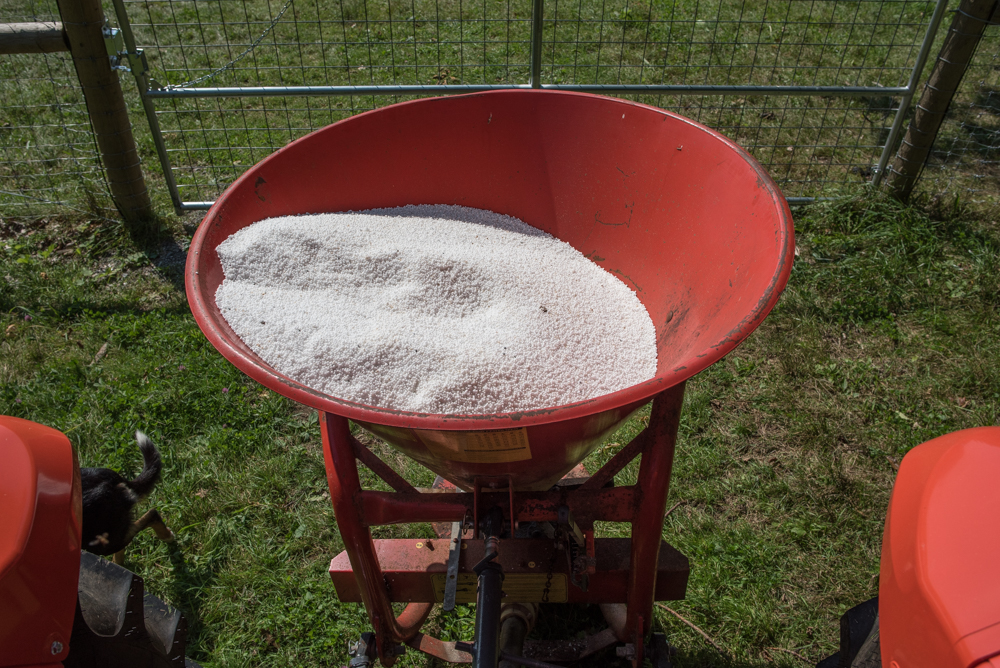
Refills are conveniently carried in the bucket.
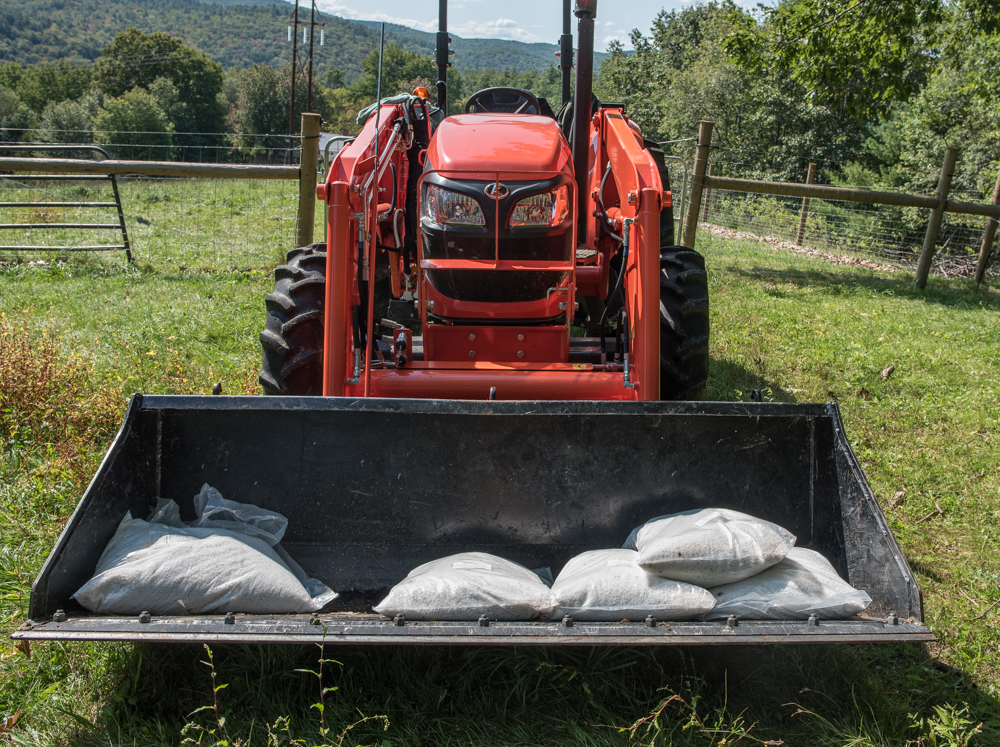
The Greek chorus didn’t seem entirely convinced of the wisdom of my actions, but perhaps I was projecting.
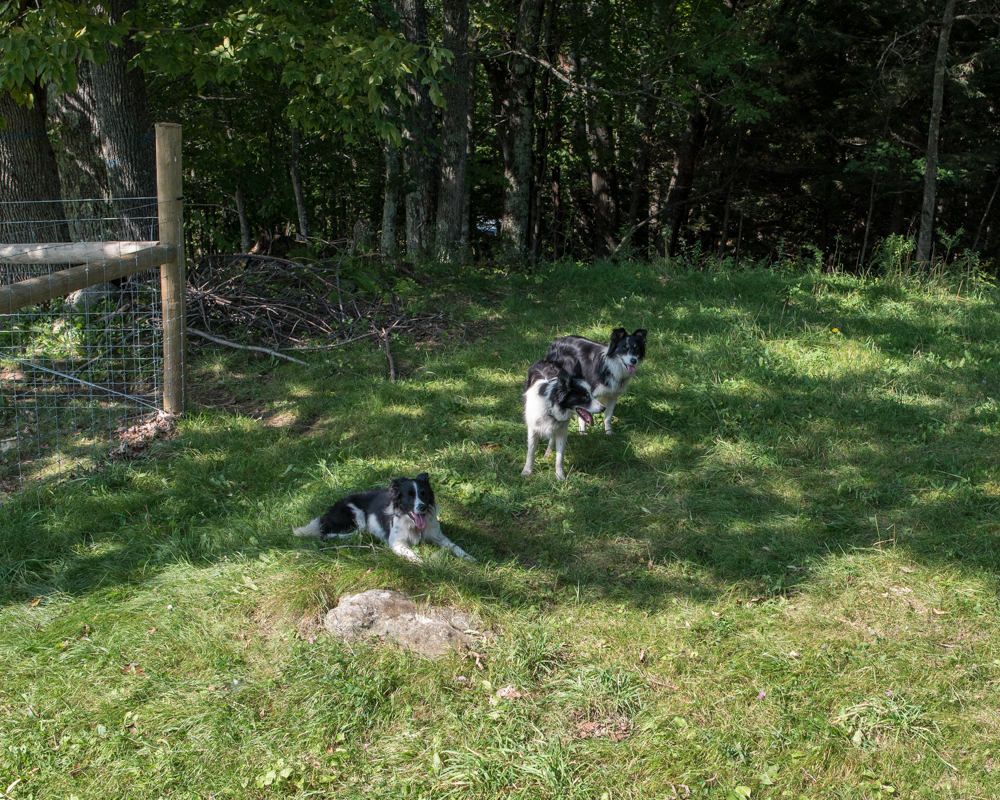
And Luc, who doesn’t like me to get far from his sight, insisted on running alongside; he had to squint against the flying urea pellets.
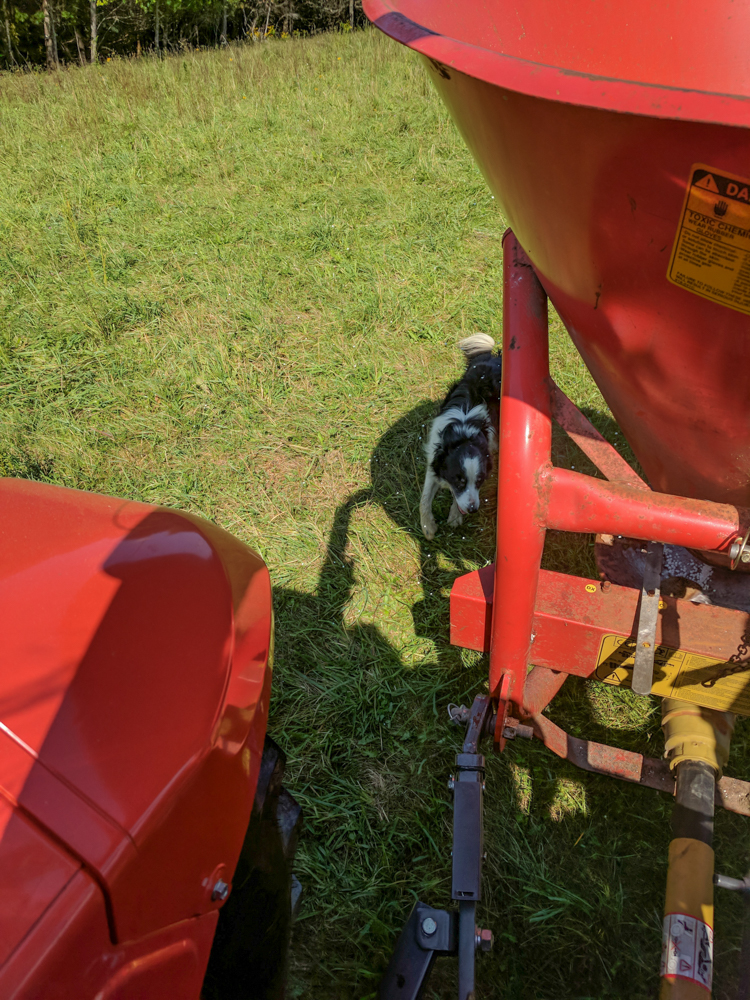
The grass should let me know in a few weeks whether my morning at the crossroads is paying off…
Tagged: Cass, Chloe, cone spreader, fertilizer, Fressoni, growth, Luc, moral ambiguity, nitrogen, pasture, steroids, tractor, urea